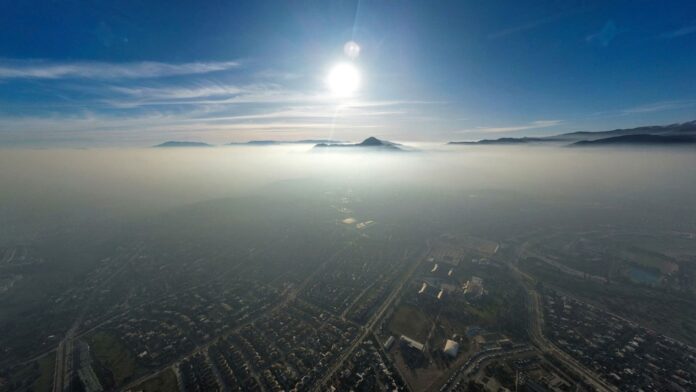A general view of the Chilean capital under a heavy layer of smog during a winter day, in Santiago, Chile, July 27, 2023.
Ivan Alvarado | Reuters
An unprecedented winter heatwave is sweeping across a large chunk of South America, with temperatures forecast to exceed 40 degrees Celsius (104 Fahrenheit) in southwestern Brazil in the coming days.
It comes as part of a recent trend of extreme heat stretching across the globe, with the month of July poised to be recognized as the world’s hottest in history.
Unlike the extraordinary temperatures recently recorded during the northern hemisphere’s summer season, however, countries including Argentina, Chile, Paraguay and Brazil are supposed to be experiencing temperatures associated with the middle of winter.
Scientists say the winter heat is being fueled by the climate emergency and the El Niño phenomenon. El Niño is a naturally occuring climate pattern that contributes to higher temperatures across the globe.
Argentina’s capital city of Buenos Aires on Tuesday registered temperatures of 30 degrees Celsius, in what the country’s weather service said reflected the hottest start to early August in 117 years of data.
Temperatures are typically around 15 degrees Celsius in Buenos Aires at this time of year, and have not exceeded 30 degrees Celsius in winter since 2014.
“Climate change is not a distant scenario,” Argentina’s national weather service said in a Facebook post earlier this week. “[It] is here and it is urgent to act.”
The southern part of the continent has suffered the worst of the winter heat in recent days, with temperatures expected to remain at abnormally high levels in early August.
Climatologist Maximiliano Herrera says South America’s scorching heat represents one of the most “extreme events the world has ever seen” and one that is “rewriting all [climatic] books.”
“Numbers speak for themselves. And it will get worse,” Herrera said Thursday via the X platform, formerly known as Twitter.
‘Virtually impossible’
In Paraguay, the country’s weather service said temperatures would likely reach a maximum of 38 degrees Celsius on Friday, with the hot weather expected to stick around through the weekend.
Temperatures on Thursday hit 39.7 degrees Celsius at Paraguay’s Vallemi airport, surpassing an all-time high recorded in July.
In Chile, the mountain town of Vicuna on Tuesday registered a national record as temperatures reached 38.7 degrees Celsius.
View of La Moneda presidential palace showing the smog caused by high temperatures in Santiago, taken on August 2, 2023.
Martin Bernetti | Afp | Getty Images
Chile’s national weather agency said several weather stations nationwide recorded temperatures over 35 degrees Celsius at the start of the month.
Meanwhile, in Brazil, temperatures soared to over 38 degrees Celsius last week.
A study published last month found that the heatwaves baking vast swathes of North America, Europe and Asia in July would have been “virtually impossible” without the human-induced climate crisis. Scientists say the extreme weather sweeping across the globe reaffirms the urgency of cutting greenhouse gas emissions as quickly and deeply as possible.


